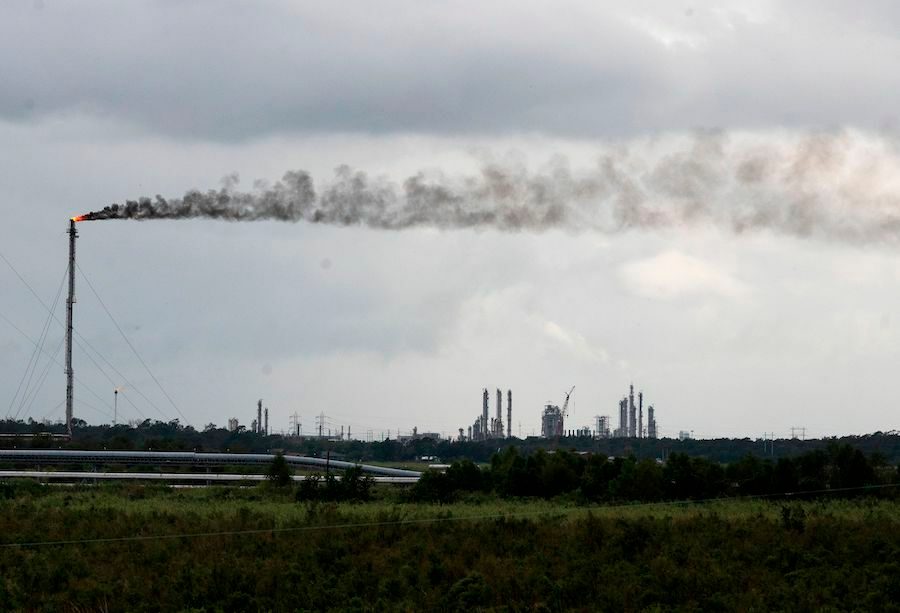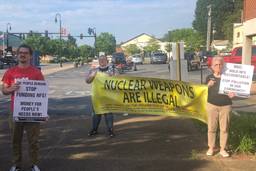An EPA Plan to Curb Pollution Could Dump More of It Into Black Neighborhoods
A Biden Administration rule could remove “forever chemicals” from our drinking water—by incinerating them in low-income sacrifice zones.
Adam Mahoney

While virtually every environmental group across the nation celebrated the Biden administration’s historic steps to lower pollution last month, John Beard sat patiently.
After years of advocacy and hundreds of scientific studies, the federal government designated two “forever chemicals” as hazardous substances. This move makes it easier to mandate the removal of these man-made compounds from the environment.
Exposure to these chemicals, found in virtually everything from Air Jordan duffle bags to lipsticks, has been connected to decreased fertility, developmental delays, and a slew of cancers. So, this new designation is remarkably poised to improve the health of the nation.
But, as he often does, Beard, an oil refinery worker turned environmental activist in Port Arthur, Texas, waited for the other shoe to drop.
“Every time we think someone on a white horse or the cavalry is showing up to give us some help,” he said, “we find out that they’ve only dug the hole even deeper for us.”
As Capital B has reported, often, these nationwide boons have unintentionally reinforced environmental injustices in historically overburdened communities, many of which are majority Black. This scenario may be no different.
One of the largest plants in the nation with a permit to incinerate hazardous wastes is in Beard’s community, which is majority-Black and, due to air pollution, has one of the nation’s worst risks for cancer.
While Environmental Protection Agency Administrator Michael Regan said the designation is a piece of “a whole-of-agency approach to protecting public health and addressing the harm to communities overburdened by PFAS pollution,” for Beard and his neighbors, it could mean more dangerous chemicals being transported, stored, and emitted in their backyards.
“A win for the country and these companies usually means more pain and suffering for us,” Beard explained.
Despite the continued practice of incinerating these types of chemicals, the data behind the safety and effectiveness is not clear. Several studies, however, show that the commercial incineration of forever chemicals only partially destroys them and often widely disperses them through the atmosphere. Once they land, they contaminate the water and soil of the surrounding communities.
Asked to sacrifice
Over the past three years, the Biden administration has tightened and enacted more pollution regulations than any other U.S. president. Policies such as lowering air pollution from power plants and removing forever chemicals from drinking water will have positive impacts on Black communities, which for decades have disproportionately lived with the harmful effects of pollution.
The policies will not just save lives; they’ll also save the federal government money. This recent designation of perfluorooctanoic acid, also known as PFOA, and perfluorooctanesulfonic acid, known as PFOS, as hazardous substances allows the government to force the companies manufacturing these chemicals to pay for their cleanup. Before this, taxpayers footed the bill, both economically and healthwise.
This “means more communities will be protected from disproportionate and unacceptable health risks, including communities with environmental justice (EJ) concerns,” an EPA spokesperson told Capital B.
While the new designation doesn’t dictate how and where these chemicals are disposed of, economics might. At least, that’s what companies like the Veolia Port Arthur incinerator plant in Beard’s city are hoping.
While it is as much as 10 times cheaper for companies to dispose of these materials in landfills, the new designation will make these practices less feasible. As these chemicals often leach into soil and groundwater, the continued cleanup costs to keep the landfills up to code may make it more expensive than just sending them to incinerators like the plant in Port Arthur and others predominantly found in Black communities.
The EPA believes that these rules will not “significantly increase demand for disposal of hazardous waste.” Still, some companies like Veolia are banking on their ability to handle the demand — particularly as some landfill operators have already said the designation may force them to reject materials contaminated with the chemicals out of fear of incurring new costs or fines from the EPA.
Nationwide, Black communities are 75% more likely than others to live near hazardous waste facilities, like the Veolia Port Arthur plant.
The Veolia plant is one of two plants in the Port Arthur area with the permit to incinerate hazardous wastes.
According to a Capital B analysis of EPA and U.S. Census Bureau data, there are 44 similar permitted plants nationwide, and more than one-third of those plants are located in areas with an above-average share of Black residents.
In Port Arthur, some neighborhoods have a cancer risk from air pollution that is 190 times higher than the EPA’s “acceptable” cancer risk. Beard says he stopped counting the many cancer diagnoses of his loved ones and the funerals he has attended as a result.
For decades, local, state, and federal leaders have promised policies and regulations to alleviate this burden, yet it preserves. While the Biden administration has made record advancements in environmental justice and prioritized ways to address the disparate impacts environmental harms have on Black communities, Port Arthur and other communities are seemingly still asked to sacrifice.
“I’m not willing to trade my life and my health and that of my family, my neighbors, or my community,” Beard said.
Justifying destruction
Currently, the Veolia Port Arthur plant is the only facility in the nation permitted to incinerate similar listed dioxin wastes, and it’s hoping to use this position to cash in on the growth in need for PFOA and PFOS disposal. As maintenance costs have gone down, the supply and demand of chemical disposal has put the company in a unique situation to increase its work, said Bob Cappadona, CEO of the company’s Environmental Solutions and Services.
“We recognize that the proper management of PFAS presents a significant environmental challenge, and we believe we are well-suited to meet it,” he said.
In recent years, as the Port Arthur plant processes nearly 60,000 tons of hazardous waste collected from across North America annually, the facility has brought in over $100 million in business. At the same time, it intensified an environmental crisis in the county, which a recent study found to be the ninth most vulnerable county to climate change threats in the country.
Hilton Kelley, another Port Arthur resident, has seen how the growth of industry has led to an “abandonment” of people living there.
“Growing up we had community centers, we had a YMCA. All of that is gone now,” he told Capital B earlier this year. “And anytime they break our communities down, they always find a way to justify it.”
Throughout the process of writing the new regulations, industry leaders, such as the Environmental Technology Council, fought hard to preserve incineration and landfilling as options. This past December, the council told the EPA that all destruction methods “should be judged on the same basis,” despite environmental concerns.
In 2019, U.S. Rep. Ro Khanna of California introduced a bill to ban incinerating PFAS chemicals, but it never reached a vote. Currently, Illinois is the only state in the country with a statewide ban on PFAS incineration, while the EPA still includes incineration as a recommended disposal practice of the chemicals.
Over the past five years, the plant in Port Arthur has been fined twice by the state and once by the federal government for violating pollution standards. Since 2021, the facility has violated the Clean Water Act and Clean Air Act eight times out of the 13 reporting periods.
The health impacts are palpable. According to a Capital B analysis of EPA data that outlines how facilities affect human health, the harmful human health impacts and risks related to Veolia’s plant is already 3,250 times higher than the average risk from hazardous waste plants across the country.
“The concentration of these dangerous activities are placed in communities like ours because it is the path of least resistance,” Beard explained. “Communities of people that are largely poor, Black and Latino, and who don’t have the means or the expertise to be able to fight back against these billion-dollar decisions.”
The issue — as Port Arthur and other overburdened communities show — is that because of the environmental damage sown over the past century, even the cleanup process will present unhealthy options. Even prominent organizations against incineration, like the Sierra Club and Environmental Working Group, haven’t offered viable alternatives, citing the need for more research while offering other stopgap programs, many of which the government has already instituted.
“I’ve been fighting this fight since the mid-1980s,” Beard said. “And ain’t nothing changed about it yet.”
Adam Mahoney is the climate and environment reporter at Capital B who has reported from more than a dozen U.S. states, Palestine, Mexico, Uganda and Vietnam.







